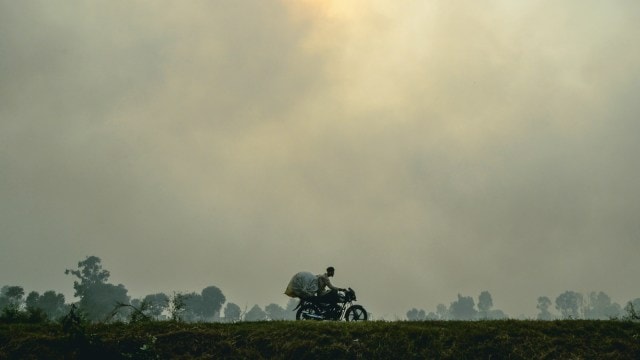
Who organised this?” someone asked at India Gate yesterday, as hundreds of parents, citizens and youth stood together in the thick November air. The truth was — no one did. There was no banner, no political flag, no NGO logo fluttering in the haze. It was the most spontaneous kind of protest; one born of exhaustion, anxiety, and love. Parents came because their children could not breathe. Journalists came because they felt the same pain. Citizens came because the silence of the state had become unbearable. What united them was not ideology but the common experience of living in a city where every breath feels uncertain — where children, elders, and even the healthiest among us are slowly losing a fight we never chose.
This has become the story of Delhi — a city where we measure our mornings by the Air Quality Index and our evenings by the colour of the sky. Each winter, authorities announce “emergency” measures; smog guns, road sprinkling, artificial rain experiments. The rituals repeat, the crisis deepens. The illusion of improvement has replaced the courage of real action.
At India Gate, the frustration was palpable, but so was a sense of moral clarity. This is not just an environmental crisis — it is a public health emergency. Yet, health continues to be the missing pillar in our pollution response. Where are the advisories from the health ministry? If the air is as harmful as a virus outbreak, why is it not treated like one?
Every paediatrician in this city will tell us that respiratory illnesses are now endemic. What parents at India Gate demanded was not radical — it was rational. They called for an Independent Air Quality and Public Health Commission: Autonomous, expert-led, and answerable to Parliament, not political cycles. A body that sets and enforces clean air standards, monitors transparently, and communicates honestly. They demanded real-time, audited data, open to citizens and researchers alike — because when data disappears, accountability disappears with it. They urged the creation of a national health advisory system, led by the Ministry of Health and Family Welfare in coordination with the Central Pollution Control Board. Alerts should reach citizens via SMS, television, radio, digital boards, schools, hospitals, buses, and trains. We need an app — a public alert platform, an “Aarogya Setu for Air” — to guide citizens in real time: When to mask, when to keep children indoors, how to protect the elderly. And above all, they demanded accountability for public funds. Every rupee spent in the name of clean air must be traceable, audited, and tied to real outcomes — not to self-congratulatory reports or photo opportunities.
But what unfolded later in the day was disheartening. As dusk fell, the same citizens who came peacefully were met with detentions and police aggression. Such actions erode trust — not just in the enforcing authorities, but in the state itself. This is not just counterproductive — it is corrosive.
Clean air should not depend on wind direction, luck, or data gaps. It should be guaranteed by design — through governance that is transparent, health-centred, and continuous. Parents should not have to choose between sending their children to school and protecting their lungs. Clean air is not a privilege or a plea; it is the first vaccine every child deserves.
What began at India Gate without an organiser may yet become something larger — a movement grounded in love, guided by evidence, and fuelled by courage. When parents stand for the air their children breathe, they are not breaking peace; they are defending it. The right to life begins with the right to breathe.
The writer is an advocate for clean air and environmental rights